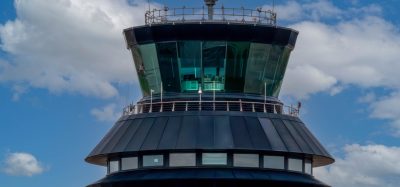Preparation is the key to success in the winter months
Posted: 13 August 2014 | Heini Noronen-Juhola | No comments yet
Heini Noronen-Juhola, Vice President – Aviation & Safety at Helsinki Airport, reveals how the airport stays open and operational during its seven-month winter season


Finland experiences snow and ice for about five months every year. Therefore its entire airport network and infrastructure have been planned with these extreme weather conditions in mind. At Helsinki Airport we have learned from experience how to excel in winter maintenance and know that preparation is the key to success. Our winter preparations usually start as early as in May 2014, and this year is no exception.
The winter season at Helsinki Airport lasts seven months from October to April. This means we have about five months to make sure everything will be running smoothly when the new winter season approaches. When it comes to winter conditions, the job is never finished – the same work has to be done over and over again, sometimes on a daily basis. And that is why we continuously practice and develop our winter maintenance methods.
A team effort
Seasonal workers, excellent equipment and precise weather forecasts keep the wheels rolling during the winter season. Regular Helsinki Airport maintenance staff are supplemented for the winter by some seasonal workforce. Seasonal workers, many of whom come back year after year, are recruited, educated and trained in early autumn. Training and practice are vital to preserving the highest levels of efficiency. Thus, our autumn training days are organised annually for the whole staff in preparation for the upcoming winter. The winter plans are then reviewed together with our maintenance department, air traffic control (ATC), airlines and ground handling companies.
Join us live: Shaping the Next Generation of Hold Baggage and Air Cargo Screening
Join us live for an insightful webinar on 11th December at 14:00 GMT, in collaboration with Smiths Detection, as we explore the strategic balance of operational efficiency, regulatory compliance, and sustainability in high-volume security environments.
This session offers a focused look into future-proofing your security strategy.
Key learning points
- Cost Reduction: Strategies to minimize bag travel time while simultaneously reducing operational costs.
- Regulatory Roadmap: Insights into the next wave of regulatory changes and their impact on future investment decisions.
- Sustainable Systems: Practical approaches to building sustainability into security systems and lowering the total cost of ownership (TCO).
- Scalable Solutions: Real-world examples of scalable systems supporting current airport growth and preparing for tomorrow.
Register now for expert insights, case studies, and actionable strategies on operational efficiency!
When snowfall is predicted we call in our contractors immediately and double the number of employees in the shift. Cleaning up heavy snowfall can take as long as two weeks: snow has to be carried away, signs and Instrument Landing System (ILS) areas need to be cleaned, storage areas have to be cleared in case of new snowfall and snow must be separated in areas where aircraft are present in order to maintain minimum cleaning time. Work during the winter months can be very intensive and demanding, and the help we receive from outside is vital for our success.
Helsinki Airport has comprehensive winter equipment specifically designed for airport use. Its winter maintenance resources are comprised of a formidable fleet of 10 PSB5500 sweepers, six high-power snow blowers, six combi-spreaders, four runway friction tester vehicles, three ILS area snow blowers and a variety of trucks and cars. Special equipment for the apron area includes sweepers and reserve SB sweepers, spreaders for chemicals and sand, a front sweeper, suction sweepers and snow blowers.
In order to keep our equipment in the best possible shape we have our own maintenance service, maintaining about 250 vehicles during the summer season. Despite the fact that many airports have outsourced their maintenance services, we want to keep our specialised snow clearing equipment know-how within our organisation. Of course no matter how excellent equipment is, occasionally our machines can break down in the middle of snowfall. And that is why our repair service is fully-operational and ready for any occurring problems 24/7.
During the summer season maintenance work typically consists of damage control and grass cutting. During the winter time the weather conditions are the main reason for maintenance work, as blizzards and snowfalls are very common in Finland.
We’ve had sensors on the runways for over 10 years now and our weather prediction systems are more than adequate. Thus we have good, up-to-date information on projected weather changes usually two to four hours ahead. We work closely with a number of businesses from outside, including the Finnish Meteorological Institute and Viselem, which monitors our runways. Every time we experience a blizzard we review our processes, set up meetings and establish how we can improve even further.
We have a direct line with the Finnish Meteorological Institute and depend a great deal on its forecasts, especially because of our shift work structure. Carrying out our work during the hours of snowfall is often not possible within the limits of regular work shifts. That’s why we always have contracted standby staff during the winter season. This seasonal flexibility is obviously more cost-effective than employing a large workforce throughout the year – a situation that might be required by regulation in some other countries.
It’s all about cooperation
Despite our specialised equipment and expert staff, the secret to excellent winter maintenance can be put down to three themes: teamwork, expert operations in various winter conditions and cooperation between all airport actors.
Teamwork creates efficiency: snow clearing should be carried out in large groups and in a line, according to patterns drawn up in advance. This way the work can be done quickly, causing as little disruption to air traffic as possible.
Expert operations in various winter conditions come about mainly through experience. It’s important to know how various types of snow and ice behave, the effects of humidity and temperature, variables resulting from wind conditions, snowfall densities and challenges they bring along. On top of all this is to understand the continuous, rapid and simultaneous change of these factors.
Cooperation between all parties involved in running the airport is in the heart of our winter season success. Close and effective interaction between the winter maintenance team and ATC is inevitable in order to ensure that the airside is clear of snow also during busy periods, snow clearing equipment work as flexibly as possible without causing disruption to air traffic and flights operate without regular delays.
Prepare and prevent
Our runway de-icing approach is greatly based on preventative methods. We look at the condensation point and make sure that we optimise the spreading of additives. Timing is critical here: if extensive icing has already occurred it takes much more time to sort out after the fact, and we can’t use the runways while the aftercare is taking place.
Using chemical additives also brings some technical difficulties. De-icing liquids can be very disruptive when they come into contact with electrical connectors, whether that is lighting systems or winter service equipment. These electrical problems are quite notorious in the industry. Therefore we, as everyone else, have to do a lot of preventative maintenance work with electric parts and components and carry out condition checks on a regular basis.
The re-fuelling of aircraft is quite easy, but nevertheless airlines and their ground handling companies may need extra units to manage the process during harsh winter conditions. In exceptionally bad weather conditions the chemical additives used in de-icing are required in greater quantities because it takes longer to re-fuel the tank. Effortless re-fuelling is, to a great extent, due to the meticulous planning and, again, preparation.
Safety and environment come first
There are some changes on the way that will help us to speed up and improve things even further. We are currently in the process of building a new centralised aircraft de-icing area. The new unit will be used for a lot of the work that is now conducted in the apron areas. It will enable us to clean the apron areas more effectively, and we will no longer be obstructed by the dirty snow that we have had to separate. Operations will become even quicker and smoother and we will also have addressed some pressing environmental issues head on.
In addition, Helsinki Airport is constantly developing more environmentally sustainable technologies and procedures for dealing with extreme winter conditions. For example, in new terminal areas we have some heated aircraft stands with district heating network return water. Other stands are partly heated with an electric system.
We also have six special units available for absorbing and removing used glycol. Waste is collected and safely dumped in municipal drains, along with the ‘pink snow’ moved to two isolated collection points. Glycol is used at other airports for dispersing snow cover on runways. However, at Helsinki Airport potassium formate is the chemical of choice – but only when the preferred mechanical methods are not feasible, usually at temperatures just above or below freezing point.
We follow both ICAO and national regulations, including those for maximum contamination on the runway. A lot of what we do for airport maintenance is visible, but we are also busy behind the scenes arranging runway inspections and making sure that information is reliable for the next maintenance. Regardless of the conditions, safety remains priority number one at all times and no compromises are made or corners cut to get planes landed or up in the air more quickly. Environmental issues are naturally equally important.
Helsinki Airport is, once again, more than well prepared to avoid the annual hand-wringing that occurs in some European airports over even relatively light snow falls. The quality and experiences Helsinki Airport has gained throughout the years may well act as an example to any airport in the world.
Biography
Ms. Heini Noronen-Juhola has a Master’s of Science degree from the Helsinki University of Technology. She joined Helsinki Airport at 2008 and is currently Vice President of Aviation and Safety. Her duties include maintenance and winter maintenance, rescue operations, aviation electricity, apron control, apron services, baggage handling system, business jet operations, environment and airside safety. Previously she worked in the high-tech development and venture capital industry.
Join our free webinar: Beyond silos: How ecosystem thinking elevates the airport experience
In today’s complex aviation landscape, airports are moving beyond siloed operations to embrace a new era of collaboration. This webinar focuses on how leading airports are using ecosystem thinking to adapt, personalize, and continuously improve every touchpoint, boosting both passenger satisfaction and non-aeronautical revenue.
Date: 13 Nov | Time: 10:00 GMT
REGISTER NOW TO SECURE YOUR SPOT
Can’t attend live? No worries – register to receive the recording post-event.
Issue
Related topics
Air traffic control/management (ATC/ATM), Airside operations, Regulation and Legislation, Winter operations


















